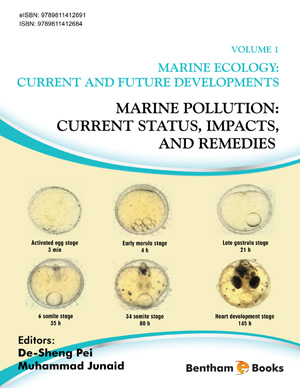Abstract
Pollution in coastal waters is quickly becoming a conspicuous problem throughout the world and the coastal areas of Pakistan are also included in severely affected and therefore no exception. Anthropogenic activities are generally accountable for the deprivation of the marine environment along with their resources across the ocean bodies. The oceans economy not only offers significant development opportunities but also raise some challenges. Not only marine sources, the land-based sources are the prominent contributor of pollution as add in the pollution through direct and indirect wastes discharge as well as effluents in the adjacent coastal waters from untreated domestic and industrial sources. In this chapter, the magnitude of pollution (organic and inorganic) in coastal environments of Pakistan was discussed including plastic pollution as in recent days, it’s a hot issue and a detailed topic itself. The weathering material, river runoff, industrial and domestic waste water enter through different channels and take part in coastal pollution. Most of the pollutants like pesticides, herbicides, heavy metals and macro-nutrients, presented intensification in a marine environment. Nutrient dynamics and their cycling influence the process of eutrophication in the adjacent coastal waters and an enrichment of macro-nutrients in coastal waters reveals an increment in the explosion frequency of harmful algal blooms were reported. The animal manure, sewage treatment, runoff of fertilizers, storm water runoff, plant discharges, and power plant emissions, and failing septic tanks are the primary sources of nutrient pollution. The algal blooms are responsible to produce algal toxins or red-tide toxins and these naturally-derived toxins harm the organisms, including humans. These bloom toxins initially contaminated the fish or seafood species, then responsible for significant loss of fish and shellfish species and ultimately economy damage.
Keywords: Marine Environment, Coastal Pollution, Nutrient Dynamics, Heavy metal Contamination, Pollution Impacts.






















